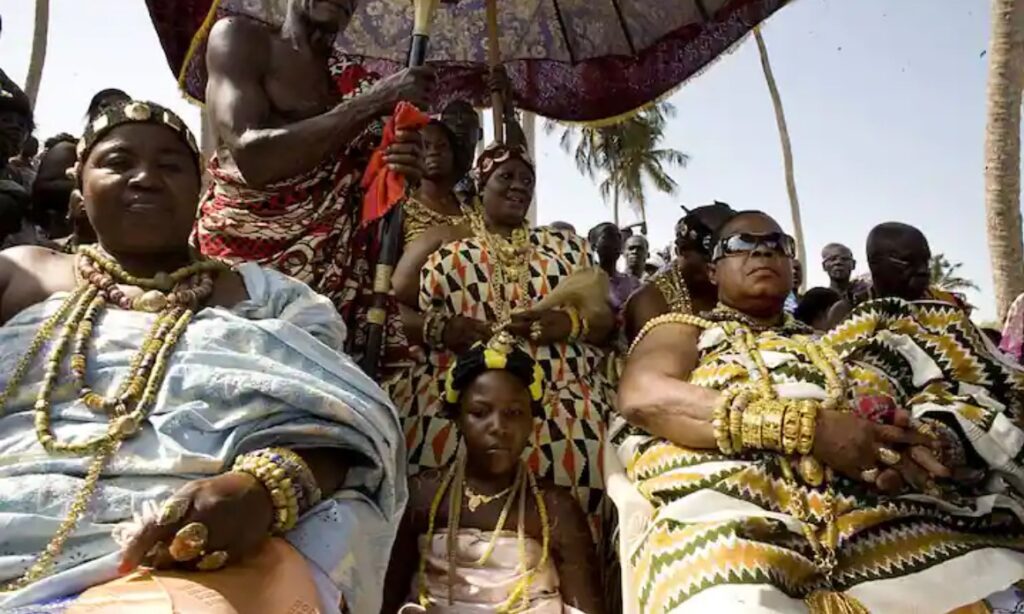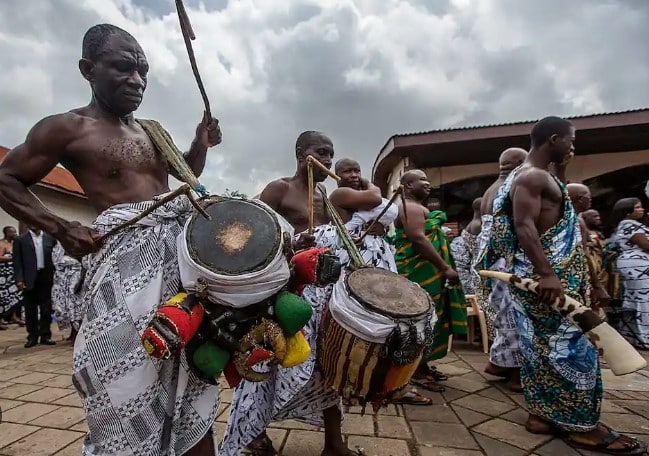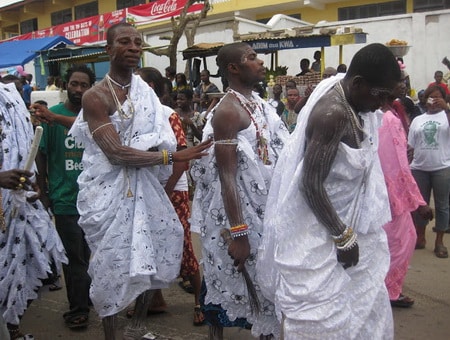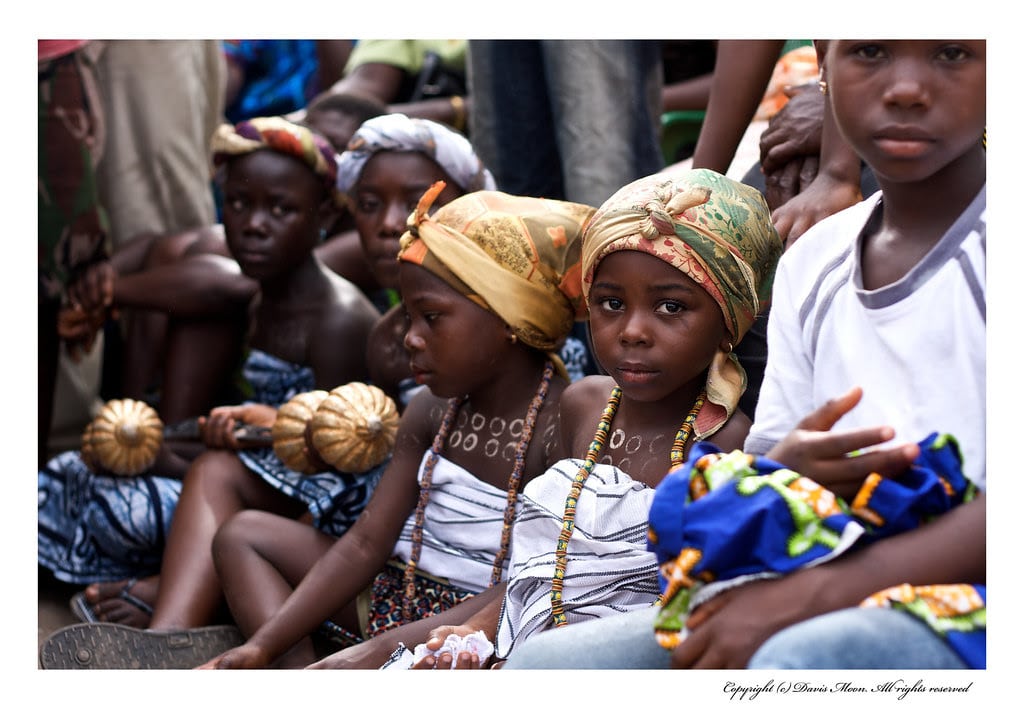The Mfantsefo or Fante people, also spelled as Fanti, belong to the Akan ethnic group. They primarily inhabit the coastal regions of Central and Western Ghana. In addition to their local settlements, Fante communities have spread to other regions such as Gambia, Liberia, and Angola, primarily due to fishing activities. Prominent Fante cities in present-day Ghana include Kasoa, Winneba, Agona Swedru, Tarkwa, Oguaa (Cape Coast), Edina (Elmina), Mankessim, Sekondi, and Takoradi.

Like all Akans, the Fante trace their origins to Bono state. Initially, the term “Fante” referred to “the half that left” and separated from other Akans, settling initially in Mankessim. The Fante comprises various states, including Agona, Ahanta, Kurantsi, Abura, Anyan, Ekumfi, Nkusukum, Ajumako, and Gomoa. The Fante, like other related Akans, can trace their ancestry back to the ancient Sahara within the Old Ghana Empire. From there, they migrated southward to Techiman in the Brong Ahafo region, and it was from this point that their three great leaders – Oson, Odapagyan, and Obrumankoma – led them further south, eventually settling in Mankessim.
Mankessim serves as the historical and spiritual capital of Mfantseman. The Fante people constitute one of the largest Akan groups, alongside other groups like the Ashantis (Asantefo), Akuapems, Akyems, Bonos, Kwahus, Baoules, Nzemas, and Ahantas. Despite facing constant conflicts with the Ashanti Empire and the Dutch during the mid-1800s, the Fante have successfully maintained their autonomy to this day. They have fought numerous wars, both to protect their northern territories from Ashanti incursions and against the Dutch and English.
1The current Fante population is estimated to be around 6 million, making them the second largest Akan subgroup and comprising approximately 13% of Ghana’s total population. In terms of inheritance and succession to public office, the Fante follow the tradition of matrilineal descent, which is common among the Akan people.

However, Fante males of fighting age traditionally belong to their father’s Asafo company.
When the Portuguese arrived in the 15th century, the Fante prevented them from venturing inland and leased properties to the Portuguese for trading purposes. However, disagreements arose between the Fante and the Portuguese over rules and regulations, leading to skirmishes and battles. As a result, the Fante expelled the Portuguese and subsequently encountered the Dutch and the British. The Fante acted as intermediaries between the interior regions and the British and Dutch traders along the coast, which brought them wealth and prosperity.

In the early 18th century, the modern Fante Confederacy was formed with the objective of establishing themselves as a respected nation and securing the withdrawal of Europeans from Fante lands. The Fante already had a sophisticated system of federal governance, with various states existing in an alliance. Each Fante state is led by a Paramount Chief, but during times of war, they unite under a Union army, often commanded by the Paramount Chief of Abura. Faced with strong resistance, the Portuguese, Germans, Swedes, and Danes gradually abandoned their trading forts in Mfantseman.
The Dutch, however, chose to stay, leading to numerous conflicts with the Fante. Weakened by constant battles against the Ashanti and the Dutch, the Fante Confederacy signed the bond of 1844 with the British. In response, the British relocated the capital of the Gold Coast from Cape Coast to Accra. The formation of the modern Fante Confederacy was a response to European attempts to colonize large areas of present-day Ghana. The 1844 bond ensured the Gold Coast’s eventual independence from colonial rule, achieved peacefully a century later.

Several Ashanti-Fante Wars ensued as the Ashanti sought direct trade routes to the coast. On certain occasions, the Fante received support from the British, although the latter aimed to weaken the strong Fante confederation established between 1868 and 1872, perceiving it as a threat to their coastal hegemony. The British and the Dutch took opposing sides during the Ashanti-Fante conflicts, with the British supporting the Fante and the Dutch supporting the Ashanti.
While the Mfantsefo are generally known for their peaceful nature, they rally together for common defense during times of war. As a result of wars with the Dutch and the Ashanti, the combined strength of the Fante Union Army exceeded thirty thousand men in 1844. Under the leadership of Amfo Otu, the Paramount Chief of Abura, they even laid siege to Elmina, their own town, and the European castle within it, ultimately expelling the Dutch from their stronghold in Elmina.





































